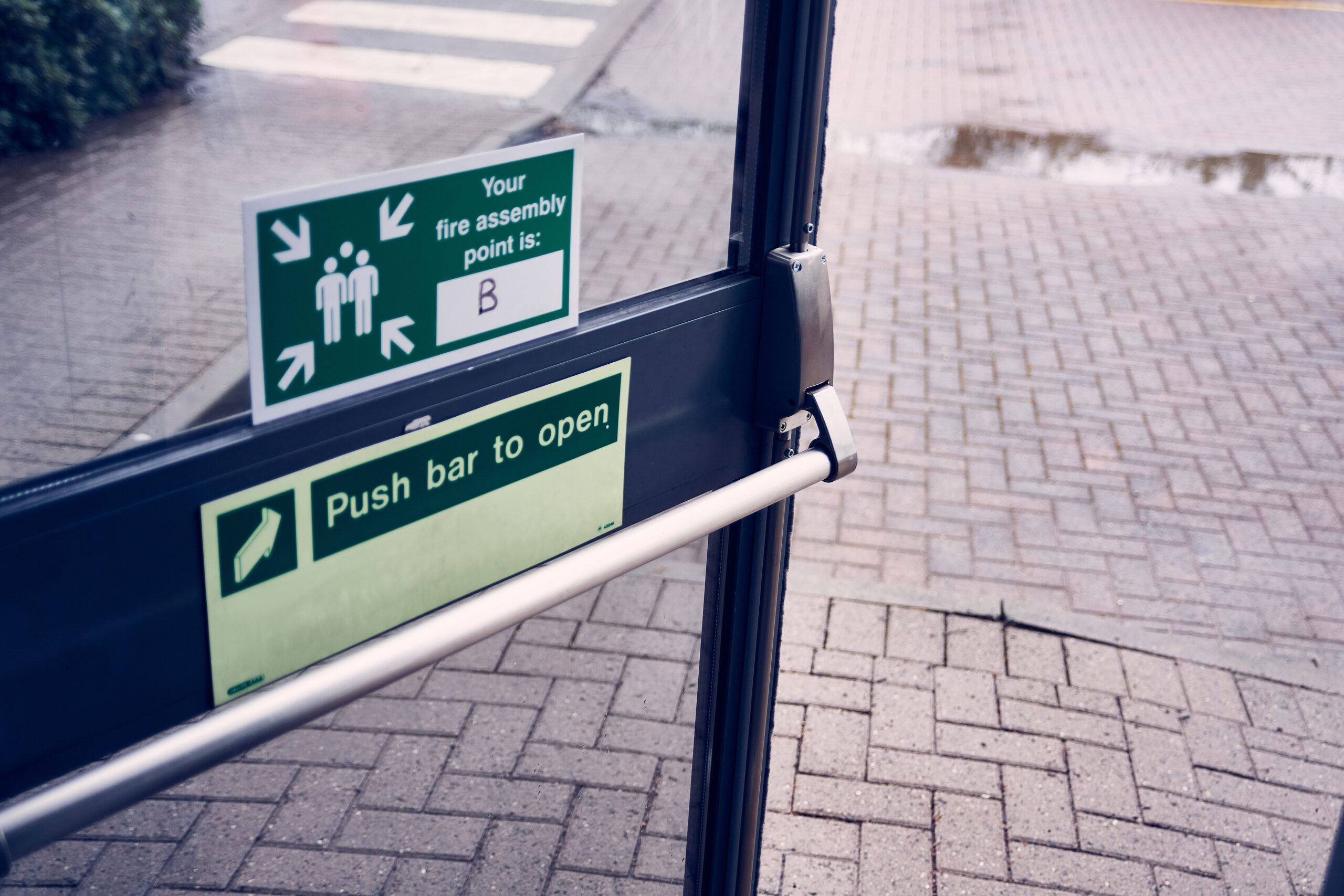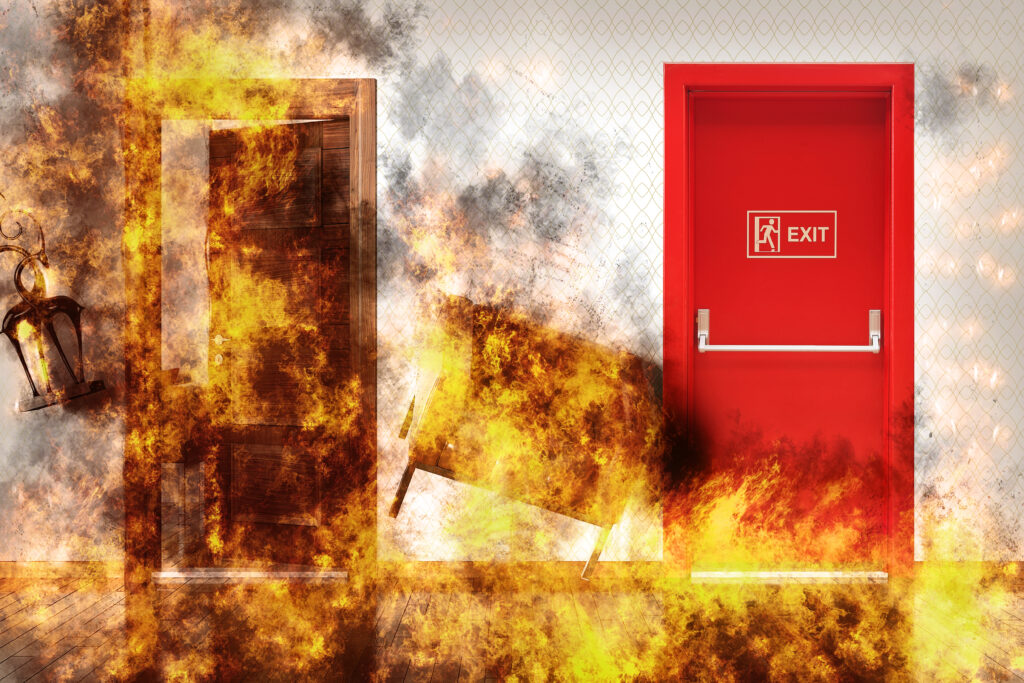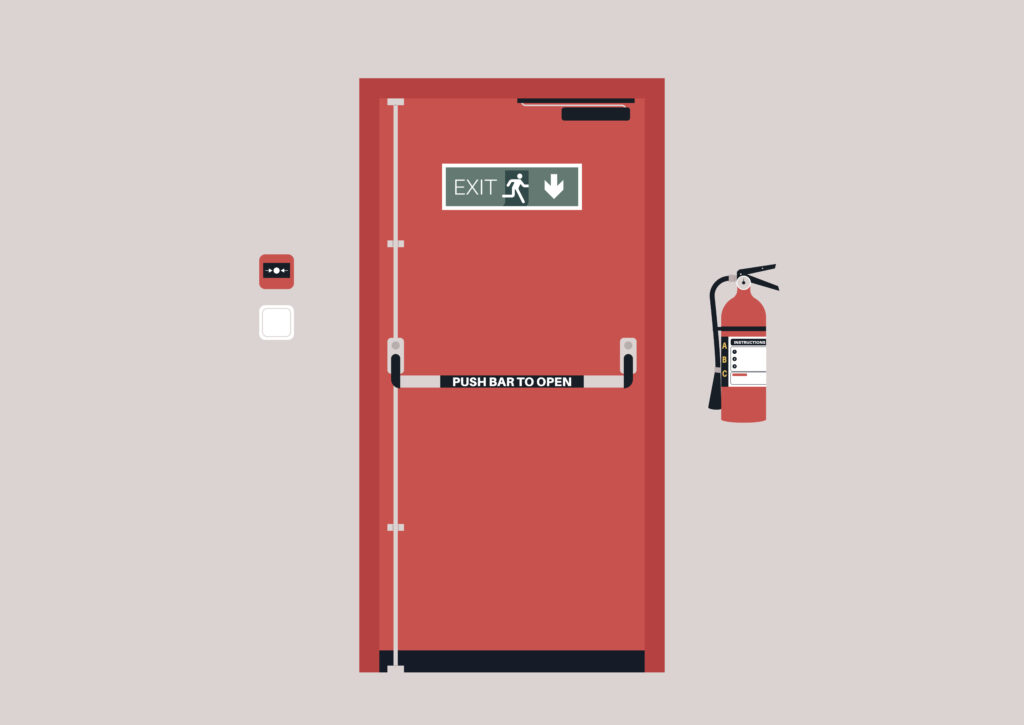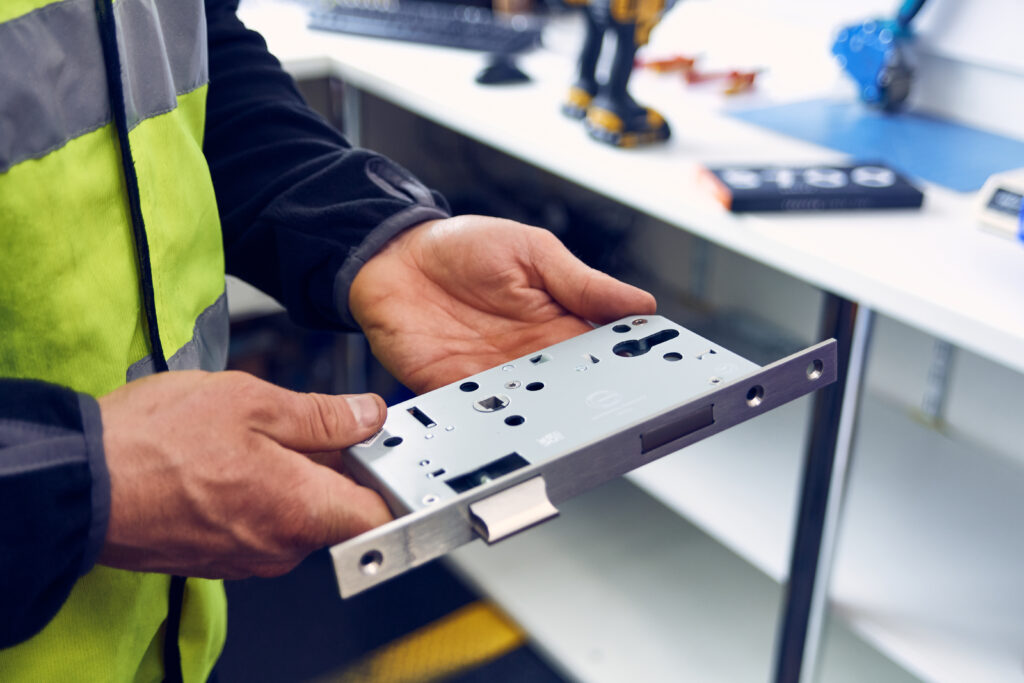
Working fire doors are a prerequisite for fire safety, but what differentiates them from regular doors? Kirk Smith of Allegion UK outlines the technical features that form fire rated doors as we know them.
Research indicates there may be around 42 billion doors found throughout the world’s built environment. Every day, each of those doors play a purposeful role towards the accessibility, safety and security of buildings and their occupants – but how many people truly recognise what they are using?
Doorsets are assembled in a variety of configurations and sizes, but more often than not, they are used without a second thought. Yet, there are stark differences between regular door and fire door classifications, and where fire safety is concerned, it’s critical for users and responsible persons alike to be able to differentiate between the two.
Despite their similar appearance, regular doors serve as interior and exterior access points only and are usually thinner at 35mm, while fire doors aim to protect buildings and their occupants in the event of a fire and are either 44mm or 54mm thick depending on its fire rating. As a key element in a building’s passive fire protection system, fire doors and their hardware components are often the first line of defence against fire, and as such, require detailed engineering and testing. Kirk Smith of Allegion UK explains:
“From components and construction to features and function, there are several clear distinctions between regular doors and fire doors. Whereas regular doors are often placed throughout a building on accessibility or aesthetic merit, fire doors are strategically positioned to compartmentalise areas of the structure – such as hallways and stairwells – and are designed to help direct occupants through safe escape routes whilst also providing them with valuable time to make their way out of the building.

“When opened, fire doors provide a means of escape. And when closed, they form a barrier to stop the spread of fire and smoke. To be able to do this, the main panel of the door (also known as the door leaf) is constructed from fire resistant materials that help to prevent the door from warping or collapsing when exposed to high temperatures. Conversely, regular doors without these materials are highly vulnerable. Nonetheless, for a fire door to become effective, it must comprise of more than just the leaf, and will include:
- The frame
- Intumescent fire – and if required for certification – smoke seals
- Glazing (although this is not necessary)
- Signage
- Door hardware, such as hinges, door closers, locks and latches
“Fire doors must work in tandem with each of these components, so to not compromise the integrity of the doorset. Intumescent fire and smoke seals for example, frame the edges of the fire door and are chemically designed to expand into the frame when exposed to temperatures beyond 200°C. In doing so, the seals close the gaps between the frame and the door itself, eliminating any possibility of fire – and if required, smoke – from passing through. Intumescent seals, along with clear ‘Fire Door Keep Shut’ signage – usually found towards the top edge of the door leaf – are some of the most unmistakeable visual marks found on a fire door.

“From an operational viewpoint, fire doors work differently than regular doors too. Fire door hardware is indispensable to fully operational doorsets, where during a fire incident, an open door is rendered useless. To be able to form an effective barrier against fire, a door must close to completion from its open position, and as part of this process, it will call upon its hinges, locks, latches and door closing devices. Door closers, whether concealed or surface-mounted, use spring-loaded hydraulics to effectively close and engage the door into its latch, where it is held firmly in place by the frame, whereas regular doors rely on manual control.

“For buildings with high footfall, an electromagnetic hold-open device may be present on a doorset. These systems are permitted to keep certain fire doors open until a fire alarm is activated, aiding ease of movement until the first sign of a fire incident, in which the system will automatically release and close the doors to completion. Equally, panic and emergency exit devices can be found on some fire doors that are positioned throughout a building’s escape routes. All exit devices are meant to be operated with minimum effort to help users successfully escape through the doorway, meaning reliability is key every step of the way.”
Testing and standards
To certify fire performance, the complete fire doorset is put through periods of standardised destructive testing in accredited laboratories and workshops. The standard fire performance test method complies to BS EN 1634-1, and in conjunction with product standard BS EN 16034, it provides the supply chain with manufacturing guidelines, and as a result, gives responsible persons and end users peace of mind that their doorset will function in a fire scenario. Kirk Smith continues:
“Fire doors are a legal requirement in all non-domestic properties and houses of multiple occupancy and with updated fire safety regulations now in effect, third-party testing and product traceability is as crucial as ever. Upon testing, certified fire doors are given a fire-resistance rating which details the length of time the door and its hardware components can withstand fire and smoke, with the most common FD ratings being FD30 and FD60, which declare the doorset can withstand fire for 30 or 60 minutes respectively, and FD30S and FD60S if the doors have been tested with smoke control. A regular door with no fire-resistance characteristics would not be able to withstand these tests and as such, would fail in a real-life event.
“What’s more, fire resistance tests are conducted on representative samples, and as such, components should not be substituted post-specification and installation. Fire door hardware for example, in addition to rigorous fire safety testing, must go through stages of performance testing to ensure they function properly and are able to sustain a level of durability that makes them fit for purpose. Mechanical door closers must be tested to the appropriate British Standard EN 1154, which classifies hardware over its category of use, number of test cycles, power size, fire behaviour, safety and corrosion resistance. Equally, emergency exit devices and panic exit devices are tested to BS EN 179 and BS EN 1125 respectively and electromagnetic hold-open devices to BS EN 1155. A fire door’s hinges must also be tested to BS EN 1935.
“For traceability purposes, end-users can review the UKCA and CE marks on a fire door and its hardware to find its fire rating, certificate numbers and the manufacturer’s details. Furthermore, for those looking to find additional information on a doorsets’ components, the Code for Construction Product Information (CCPI) can be referred to for clear, accurate and up-to-date product information – helping people to review and select trusted hardware that conforms to UKCA and CE certifications.”
